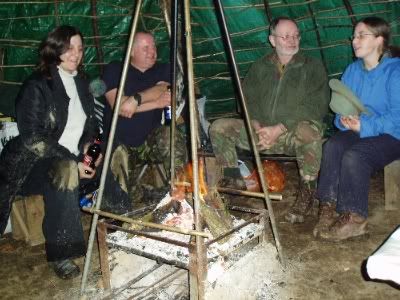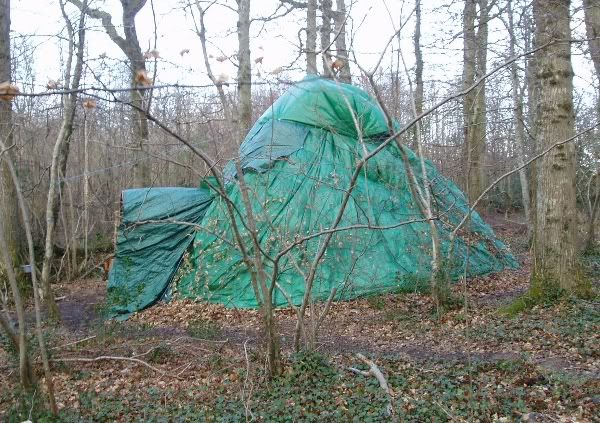I seem to remember gravity fed water too
Just for you Red, the 100ltr water tank for the washing up, I don't think there is a picture of the toilet block and wash-up sink, or the gas hob

I seem to remember gravity fed water too

Dave,
I have a similar set up to the teepee you had but struggle managing the smoke from an open fire in the middle. There is a hole at the apex but i find it gets very smoky inside apart from three foot or so above the ground. What do you burn? Wood or charcoal? or do you have a stove with chimney? Any tips on how to improve the draught would be appreciated.
 it's a case of making sure that your wood is dry and well seasoned and then having the vent at the top large enough
it's a case of making sure that your wood is dry and well seasoned and then having the vent at the top large enough 

ah yes that old chestnutit's a case of making sure that your wood is dry and well seasoned and then having the vent at the top large enough
In my 'limpet' the top has a 3 foot diameter hole (where the tarps on the sides meet), then pulled across that is a small tarp in a kinda chinaman's hat arrangement. If there is no breeze then the hat needs lifting to allow enough draw, but normally the smoke only fills the top foot or so.
The limpet is sadly no more, after three and a half years the birch poles in it's construction were getting brittle and working through the tarps. But is only took me a couple of afternoons to put the thing up on my own (I had a hand with the tarps, but have refitted them solo too) and it has managed some very nasty rain and snow. The raised fireplace in the middle provided heat and light very well and I've been out there with snow on the ground whilst teaching (it also saved a good number of gatherings before I had any other covered spaces!)


the bottom picture shows the top sheet tethered down against the strong winds we had last october/november, but when I had groups in I would move the securing ropes to hold it out and allow a little air underneath

I'd go for a tipi/lavuu or a yurt (modified to be more pointy if the snow/rain was expected to be heavy). Or the classic "cabin" style tent. My experience with tipis in Sweden is that rain will run down the poles and make things wet inside as well. Unfortunately, because I like them a lot.
I'd go for a tipi/lavuu or a yurt (modified to be more pointy if the snow/rain was expected to be heavy). Or the classic "cabin" style tent. My experience with tipis in Sweden is that rain will run down the poles and make things wet inside as well. Unfortunately, because I like them a lot.
